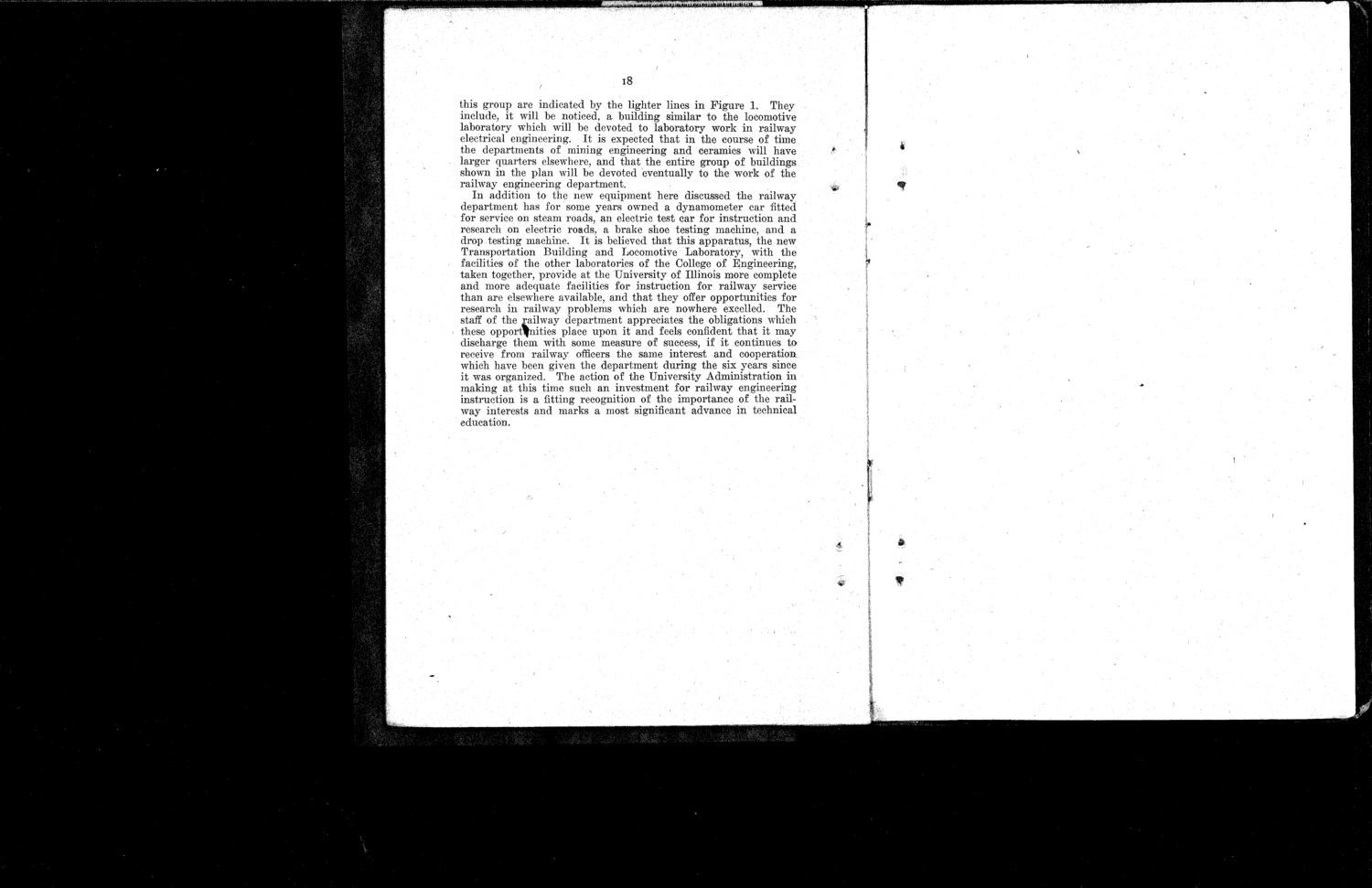| |
| |
Caption: Dedication - Locomotive Testing Laboratory (1913)
This is a reduced-resolution page image for fast online browsing.

EXTRACTED TEXT FROM PAGE:
18 this group are indicated by the lighter lines in Figure 1. They include, it will be noticed, a building similar to the locomotive laboratory which will be devoted to laboratory work in railway electrical engineering. It is expected that in the course of time the departments of mining engineering and ceramics will have larger quarters elsewhere, and that the entire group of buildings shown in the plan will be devoted eventually to the work of the railway engineering department. In addition to the new equipment here discussed the railway department has for some years owned a dynamometer car fitted for service on steam roads, an electric test car for instruction and research on electric roads, a brake shoe testing machine, and a drop testing machine. It is believed that this apparatus, the new Transportation Building and Locomotive Laboratory, with the facilities of the other laboratories of the College of Engineering, taken together, provide at the University of Illinois more complete and more adequate facilities for instruction for railway service than are elsewhere available, and that they offer opportunities for research in railway problems which are nowhere excelled. The staff of the railway department appreciates the obligations which > these opportunities place upon it and feels confident that it may discharge them with some measure of success, if it continues to receive from railway officers the same interest and cooperation which have been given the department during the six years since it was organized. The action of the University Administration in making at this time such an investment for railway engineering instruction is a fitting recognition of the importance of the railway interests and marks a most significant advance in technical education. * *
| |